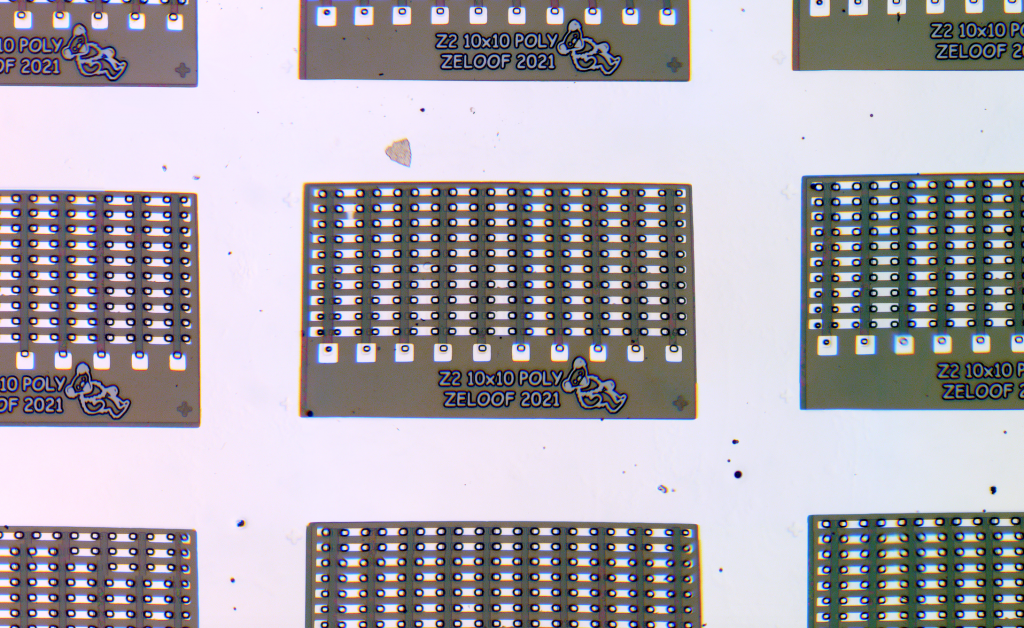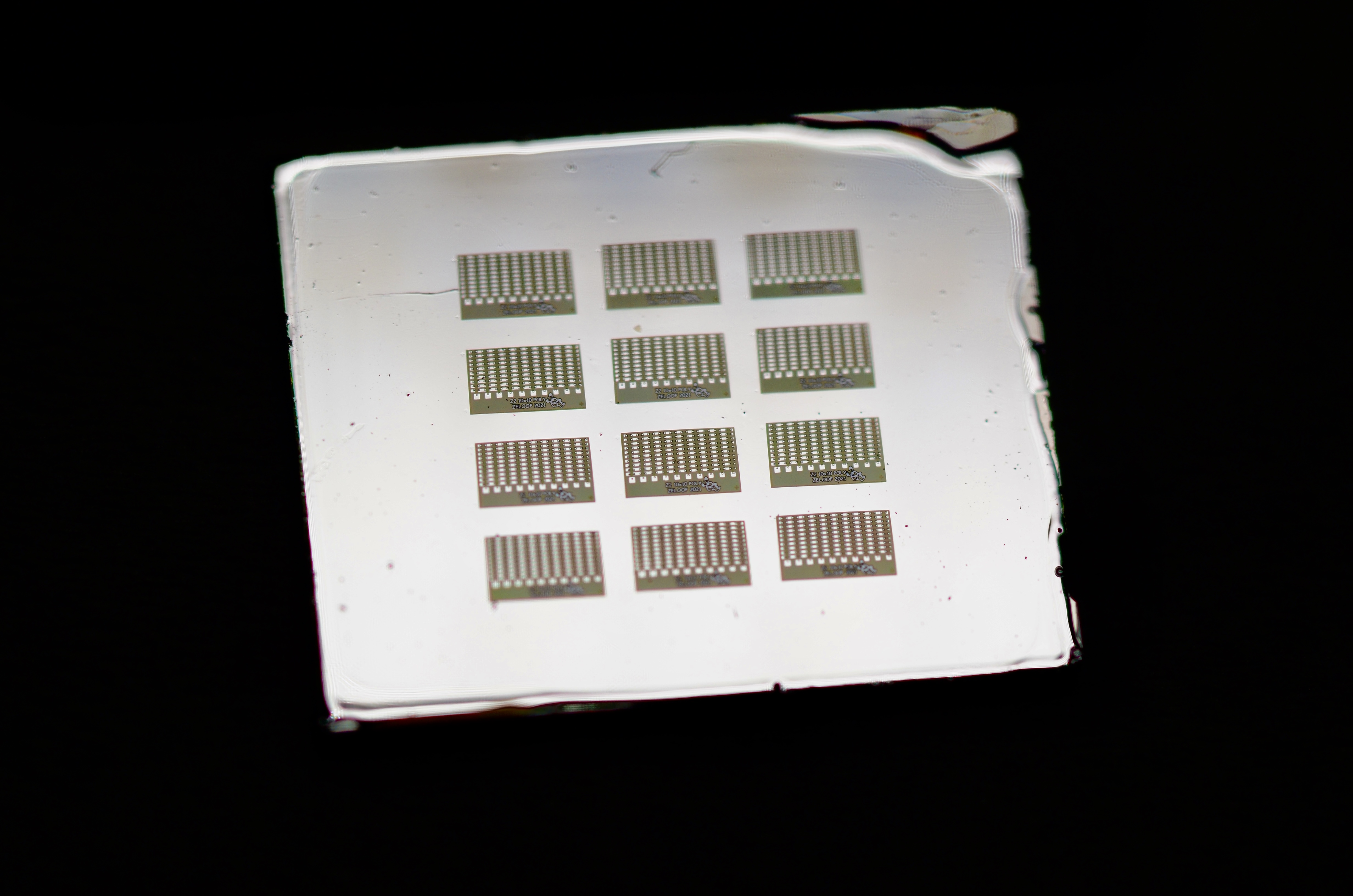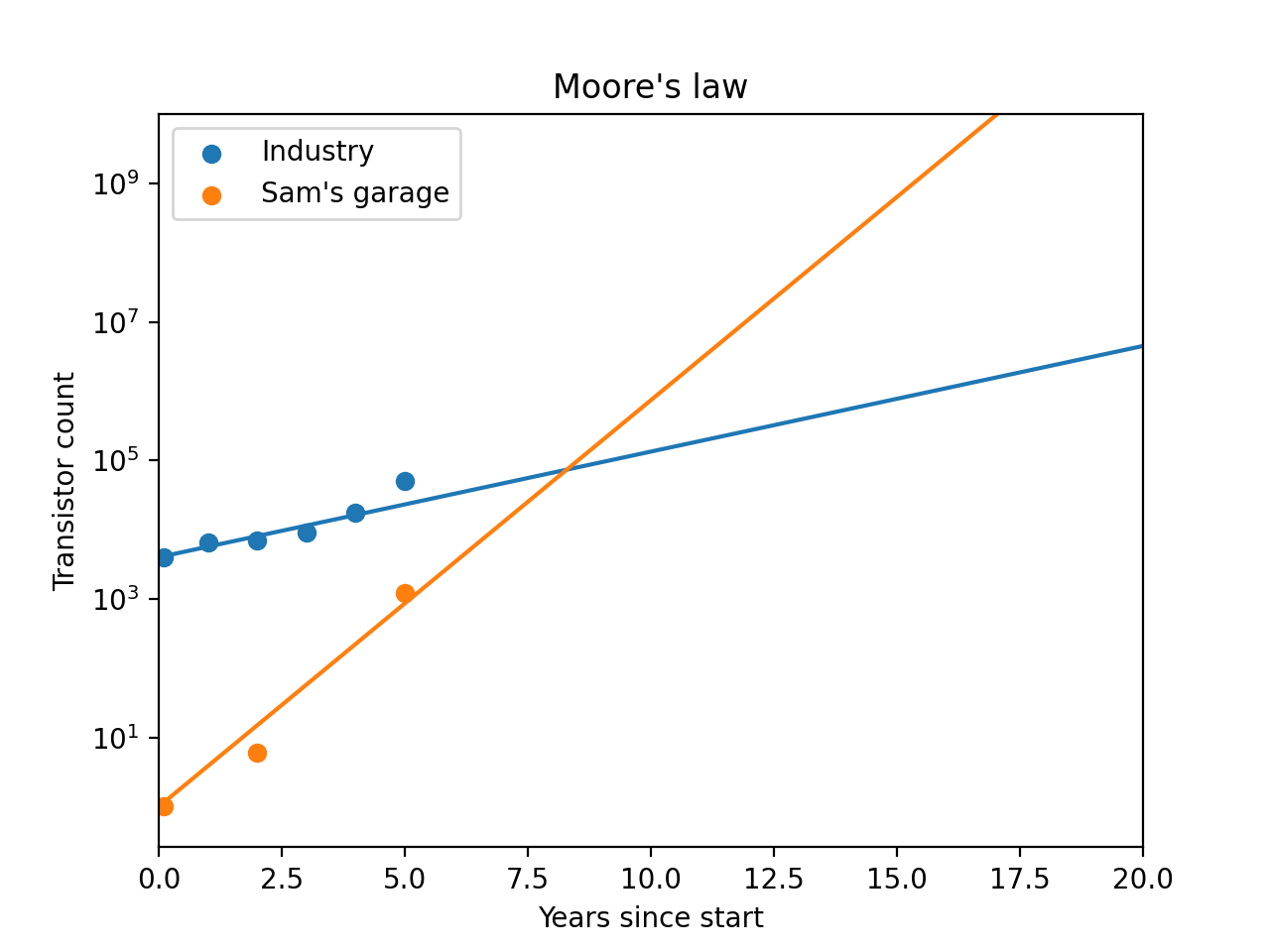DIY Silicon: Man Builds Integrated Circuit That's Similar to Intel's 4004 CPU
What one man can do in 2021 was only achievable by a whole company in the 1970s
If you thought building homemade computer chips was impossible, you would be wrong. Sam Zeloof has just made his second homemade silicon integrated circuit featuring 1200 transistors, by using the same techniques as Intel did with its first CPUs in the 1970s.
Zeloof's story is quite impressive: Fe started building his first chip in 2018 called the Z1, using a 5 micron PMOS process. He started building the chip in high school, and acquired all the information and machinery necessary to build the chips right from home.


Now in 2021 Zeloof has created his second computer, chip called the Z2. This chip is orders of magnitude greater than the Z1, with 1200 transistors on a single chip compared to just six on the Z1.
The Z2 is also much more efficient compared to Zeloof's first design. By switching from a metal gate process to a polysilicon gate process, he was able to reduce the chip's required voltage input from 10v to just 1v, reducing power consumption significantly.
For comparison, Intel's 4004 CPU had 2200 transistors, while the Z2 has 1200 and is built on the same process. What took a whole company to do in the 1970s is now being done by a single person in his own home.
His yield rate isn't perfect, which is to be expected from a home lab. Out of the twelve Z2's he's built, only one is fully functional, with the rest at around 80% functionality. So there's still more tweaking and optimizations to be done.

Zeloof has shown that with the right amount of knowledge, it is possible to build your own integrated circuits right from home that can spar with the best--at least the best from the 1970s.
Get Tom's Hardware's best news and in-depth reviews, straight to your inbox.
Don't expect any of Zeloof's chips to land on our Best CPUs list anytime soon. But we can't wait to see what he manages to do after the Z2.

Aaron Klotz is a contributing writer for Tom’s Hardware, covering news related to computer hardware such as CPUs, and graphics cards.
-
gargoylenest very good for him to be interested and learning all this micro electronic stuff. But as for "a teenager building a chip in his garage", its missing the part about being very rich, with parents most probably already working in this field. But nonetheless, a great future awaits him if he can keep learning at this rate.Reply -
CerianK This is a good step toward democratizing VLSI, which will hopefully eventually make up for the loss of much of the low-level hands on ability that occurred starting 20-30 years ago when SMT became ubiquitous (unless you happen to have SMT tools and a binocular microscope).Reply -
Drazen Today is no problem to create a custom CPU or any type of chip. What you need is VHDL knowledge and some 10 000 - 20 000 Eur to spare.Reply
But much simpler solution is to use free ARM Cortex M0 or RISC-V design and a FPGA of some 500 Eur. -
JWNoctis I think that's simply a transistor array test chip, but good for them.Reply
Didn't Intel release the masks of the 4004 as part of an anniversary celebration some years back? Might be interesting for anyone with the equipment to try out. Scale it up to a 6502 or 6581, and there might actually be a small market except for some possible licensing problem. -
TheDane Reply
I actually miss the 6502 - learnt assembly language coding using that chip (wrote code by entering the opcode values in hexadecimal :ROFLMAO:). It was quite fast for some stuff, even more so when +2 Mhz versions came about.JWNoctis said:I think that's simply a transistor array test chip, but good for them.
Didn't Intel release the masks of the 4004 as part of an anniversary celebration some years back? Might be interesting for anyone with the equipment to try out. Scale it up to a 6502 or 6581, and there might actually be a small market except for some possible licensing problem. -
dmitche31958 Yes. This is interesting and I did enjoy it and he is impressive, but to compare it to what was done in the 1970s is very misleading. He is working with knowledge that was being discovered at the time. Something that scientists don't have the ability to look into the future to see what can be accomplished. Next, he's using 21st century equipment not available in the 1970s. Just watch the video and realize that all the electronics that he used didn't exist either in the quality or ease of use. Even then, I didn't catch if the materials used were even known to exist with this latest build.Reply
All in all it is a great experience for someone with time and a lot of money but to compare achievements to the past is less impressive. -
Pcychologist Dude people is so salty belittling this guy's achievement, wtf I feel good for arranging my groceries in way that they fit on the car... who gives a damn if the guy is rich, has smart parents, even if he is Mensa genius or whatever. For all I know this is the first guy doing a CPU at home, maybe he isn't the first, but I'm sure that people would be way more supportive if he belongs to one of the modern group of woke/empowered people. It will be awesome if he makes some videos or write about his journey. I cannot even wrap my head around the probabilistic nature of the CPU making process, how come some are not fully functional?. That reminds me when AMD sold some CPU with locked cores because that batch wasn't 100% operative, but motherboards manufactures implemented the CPU unlock thing and some people got lucky paying for two cores and getting more than thatReply -
CerianK Reply
Yup... I mastered it, including undocumented op codes, independently invented NOP sledding, added a bank swap switch to my C128s 6510 for full memory inspection, wrote RLL codecs for save/load of memory dumps (including 2 MHz for decompression). I tried to train groups of my friends on techniques, but way too much beer was usually involved to make any serious progress with them.TheDane said:I actually miss the 6502 - learnt assembly language coding using that chip (wrote code by entering the opcode values in hexadecimal :ROFLMAO:). It was quite fast for some stuff, even more so when +2 Mhz versions came about. -
dcki It's 100 per chip, not 1200. Still cool anyway.Reply
Proof: at the beginning of his video he says 100: IS5ycm7VfXgView: https://youtu.be/IS5ycm7VfXg
